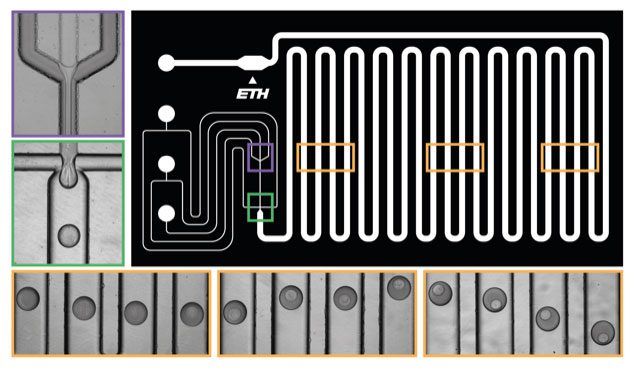Recent years have seen an increase in the study of emulsions and bubbles with complex structured interfaces. Pickering emulsions, Ramsden foams or polymer coated capsules are just a few examples of where the exceptional properties of these multiphase materials are derived from the structure at the interface. These systems have promising high-end applications. Several research groups have also embarked on the detailed characterization of the thermodynamic and rheological properties of the interface to understand structure property relations. So far it has been difficult to connect the fundamental studies of interfacial properties and constitutive modelling as it was not possible to make drops with controlled surface coverage and composition.
In a recent collaboration between the soft materials and complex groups at ETH Zurich and researchers at KU Leuven, we developed a generic and versatile method to create designer liquid-liquid interfaces, using transient double emulsions. Exploiting phase diagrams or slow miscibility, a transient double emulsion approach leads to unprecedented control over the composition and coverage of the final interface. Our method is suitable for particles, but provides good control for types of emulsions stabilized by insoluble Langmuir layers. The result is expected to be both of practical importance, for instance in the design of new materials, and should also help with our understanding of fundamentals such as coalescence. Last but not least, this is a good example of functional soft matter by design.
Read more:
G. Dockx et al,
Nat. Commun. 9, 4763 (2018)
SoftComp partners: ETH Zurich/KU Leuven



